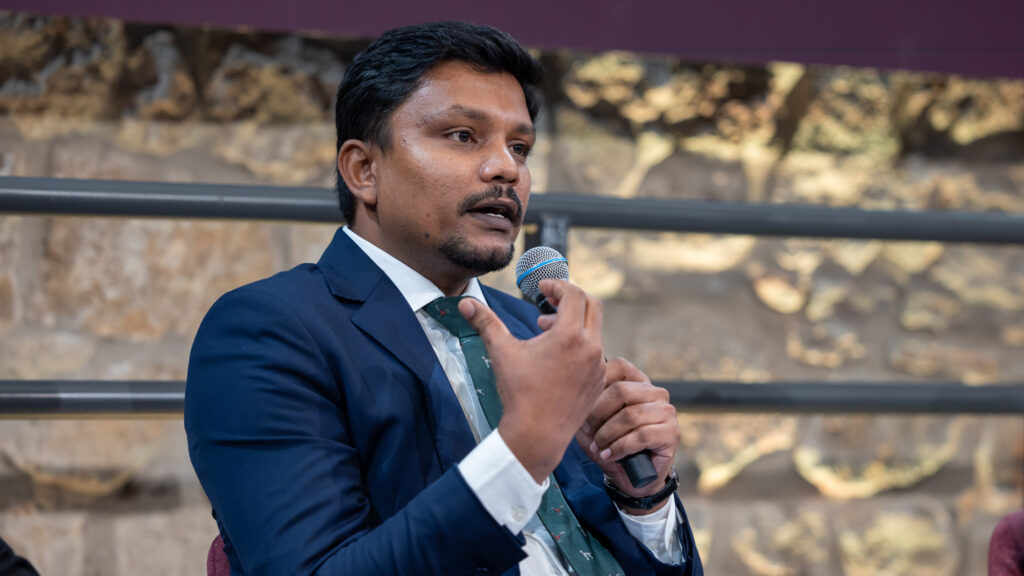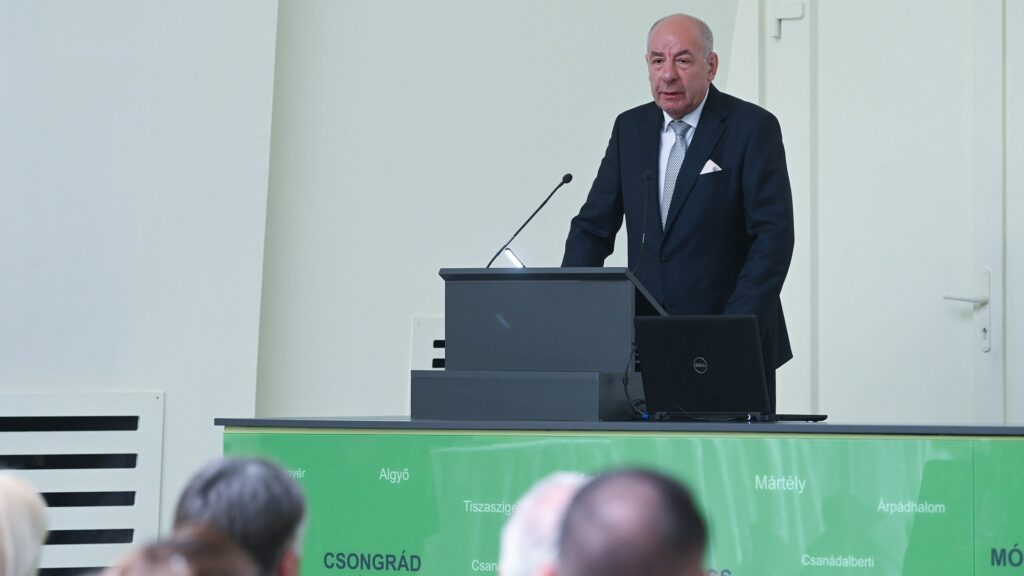The Indo-Pacific region is gaining increasing significance in contemporary geopolitics. As China’s influence continues to grow, the United States is actively working to reinforce its relationships and alliance networks in this strategically vital area, prompting reciprocal measures from Beijing. On Monday the Danube Institute hosted a conference dedicated to examining the geopolitics of the Indo-Pacific amid the intensifying rivalry between the US and China.
The Future of Quad
The first panel discussion featured a distinguished group of experts, including Lt Gen RK Sawhney, Centre Head at India’s Vivekananda International Foundation; Gaurav Saini, Co-founder of India’s Council for Strategic and Defense Research (CSDR); Hideshi Tokuchi, President of Japan’s Research Institute for Peace and Security and its first Vice-Minister of Defense for International Affairs; and John Tsagronis, Professor of Statecraft and National Security Affairs at the Institute of World Politics, USA. The panel explored the current role and future trajectory of the Quadrilateral Security Dialogue (Quad), a partnership among Australia, India, Japan, and the United States.
Hideshi Tokuchi highlighted the Quad’s non-alliance nature, describing it as ‘a group of maritime democracies upholding the rules-based international order’ and fostering a Free and Open Indo-Pacific (FOIP). He traced its origins to the collaborative response to the 2004 tsunami and emphasized its focus on Maritime Domain Awareness (MDA) and Humanitarian Assistance and Disaster Relief (HADR). He also noted that 95 per cent of illegal fishing in the Indo-Pacific is attributed to Chinese vessels, often evading detection.
Lt Gen Sawhney addressed the region’s strategic significance, calling the Indo-Pacific ‘a flashpoint of conflictual issues’ yet a hub of interdependent activity. He underscored the importance of democratic security to counterbalance China and pointed to joint military exercises like Malabar 2024 as a testament to the Quad’s operational capabilities. Sawhney also reflected on India’s balanced foreign relations, emphasizing that ‘India believes long-term solutions to global problems can only be achieved through constructive dialogue.’
Gaurav Saini affirmed the Quad’s durability, framing it as ‘a mechanism for dialogue between four maritime democracies.’ He identified three drivers: countering China’s economic and geographic coercion, the shared Indo-Pacific vision among Quad members, and the practical benefits of the partnership. ‘The Quad offers a new form of multilateralism,’ Saini remarked, ‘responding proactively to emergencies and advancing initiatives that directly benefit the public.’
‘John Tsagronis expressed optimism about US resilience, stating: “Put your money on the US; I believe it is the future”’
John Tsagronis, reflecting on US policy, acknowledged the growing rivalry with China, citing its aggressive economic practices and military developments. He expressed optimism about US resilience, stating: ‘Put your money on the US; I believe it is the future.’
On Taiwan, Tokuchi stressed that any contingency there would directly impact Japan, necessitating robust defence measures and closer coordination with the US. Sawhney acknowledged India’s limitations but highlighted the broader implications of a potential conflict, emphasizing the critical role of the Indian Ocean for trade and energy flows.
In conclusion, the panellists unanimously recognized the Quad’s strategic importance and its evolving role in addressing regional and global challenges.
The Global South and the Indo-Pacific
The second panel centred on the Global South’s influence in the Indo-Pacific, with a particular focus on India and ASEAN. Moderated by Philip Pilkington, the discussion featured Lt Gen RK Sawhney and Gaurav Saini from the earlier panel, joined by Hoang Thi Ha, Senior Fellow at Singapore’s ISEAS, and Thomas Benjamin Daniel, Senior Fellow at Malaysia’s Institute of Strategic and International Studies.
Philip Pilkington opened by highlighting the growing economic influence of the BRICS, which surpassed the G7 in size by 2022. He noted the increasing separation of trade and conflict within BRICS, reflecting a broader trend of pragmatic engagement.
Hoang Thi Ha described Southeast Asia (SEA) as strategically pragmatic, balancing relationships with major powers while prioritizing economic growth. ‘SEA countries benefit significantly from Quad initiatives, yet remain agnostic in their exterior relations,’ she explained. Hoang emphasized Vietnam’s nuanced position—deeply distrustful of China, yet cautious to avoid direct confrontation. ‘Vietnam thrives on global connections, with ASEAN being the largest trading partner of China, while also supporting the rules-based order.’
Gaurav Saini reflected on globalization’s transformative effects on the Global South. ‘Trade is inherently inclusive; economies get entangled, creating challenges to the Washington Consensus.’ He stressed India’s unique stance: ‘We fight our own wars and make our own peace. This ensures policy autonomy and enhances our influence without alliances restricting us.’

Thomas Daniel explored ASEAN’s evolution, citing its formation as a response to regional conflict. He warned, however, that ASEAN’s centrality faces challenges from Quad and AUKUS. ‘SEA’s promiscuous approach to partnerships reflects an anticipation of multipolarity, but the region must leverage opportunities while addressing internal cohesion,’ he noted, pointing to the region’s competitive edge and rising foreign direct investment.
Lt Gen Sawhney emphasized the interdependence of economic power and security. He pointed to India’s balanced foreign policy, stating: ‘We will not be bullied or dominated. Our military and economic self-sufficiency are crucial to safeguarding democracy.’ Sawhney reiterated ASEAN’s importance, acknowledging the region’s developmental diversity and India’s commitment to cooperation without domination.
The round table discussion delved into the expanded role of BRICS. Hoang noted that ASEAN’s participation in BRICS+ is driven by diversification and symbolic gains rather than pure cost–benefit analysis. Daniel warned of the risks in over-expanding BRICS, likening it to ASEAN’s own challenges with its Regional Forum. ‘An expanded BRICS risks inefficiency and dysfunction,’ he cautioned.
In conclusion, the panellists agreed that while ASEAN and the Global South have embraced pragmatic and diversified strategies, they face enduring challenges in cohesion and balancing relations with global powers. The discussions reinforced the importance of fostering partnerships without compromising sovereignty or efficiency.
Related articles:








